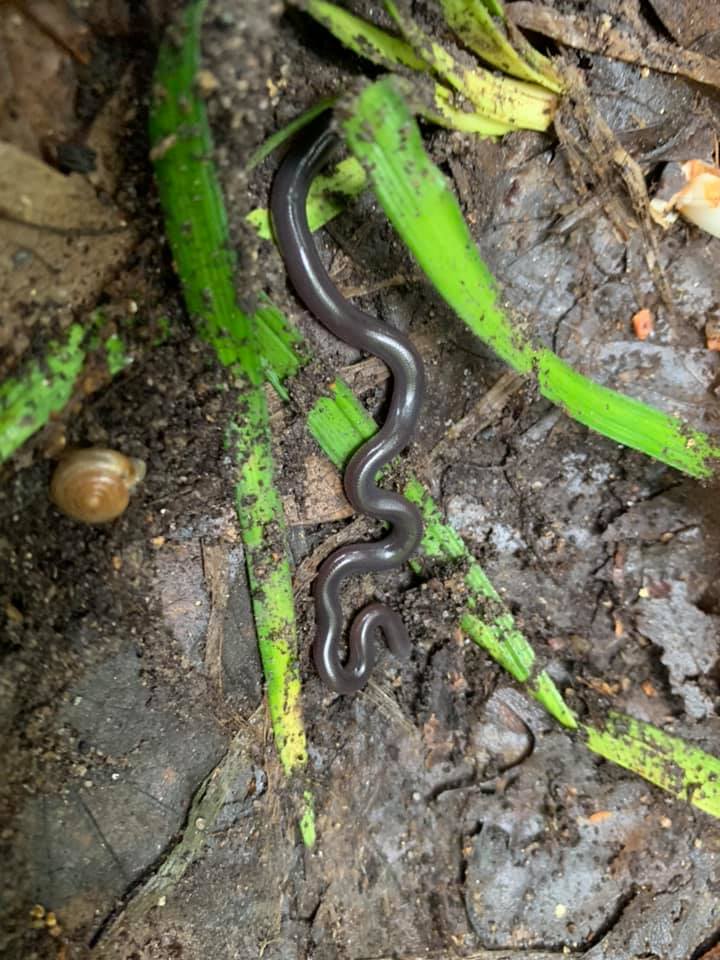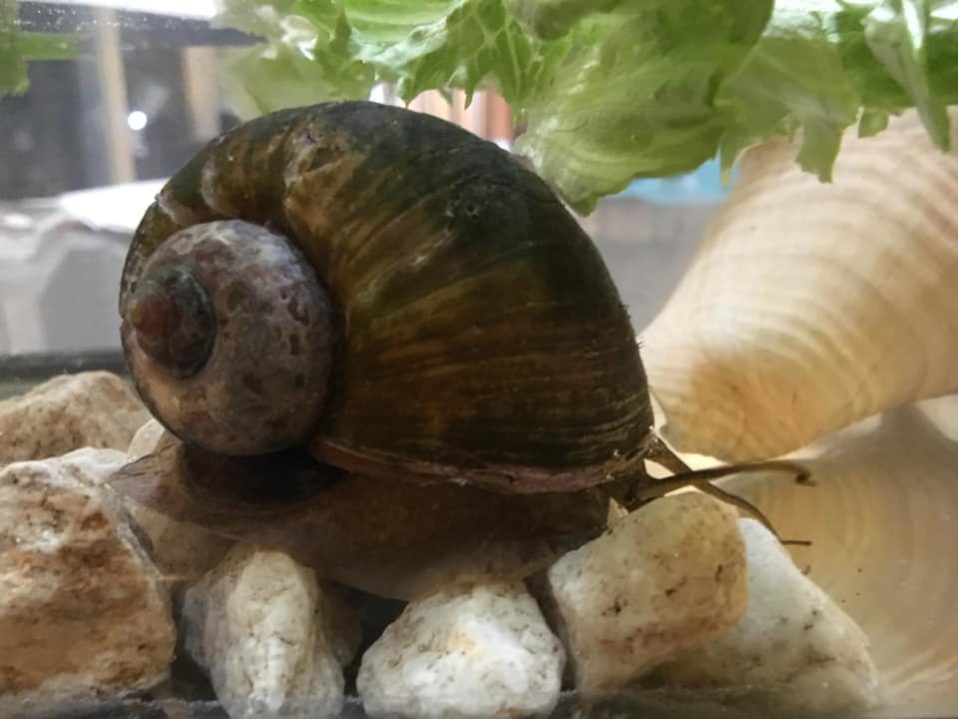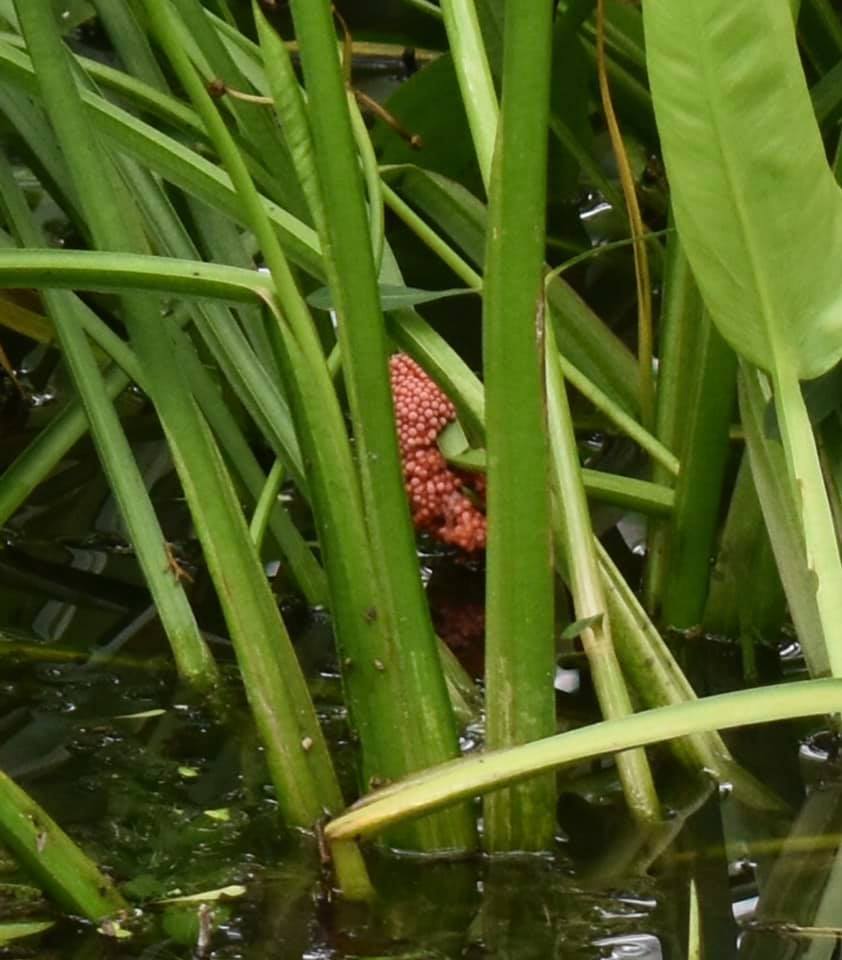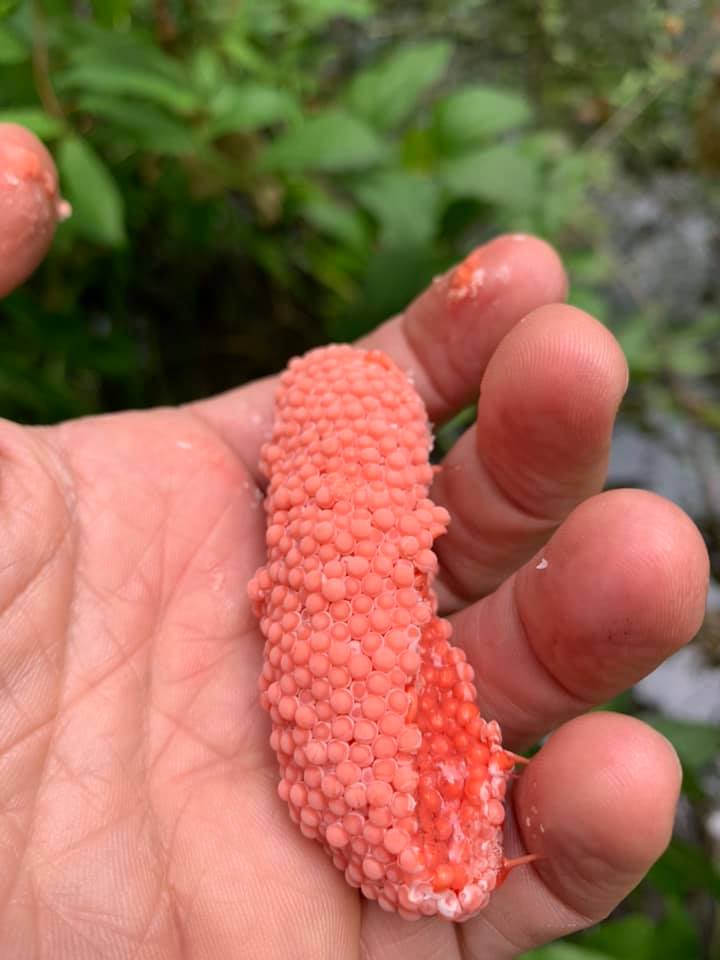By Eric Duran, Staff Naturalist
On Tuesday, May 7, 2019 during a light rain, I went out flipping logs to add a couple of species to the previous day’s bio-blitz, and found quite a surprise… a Brahminy Blindsnake (Indotyphlops brahminensis).
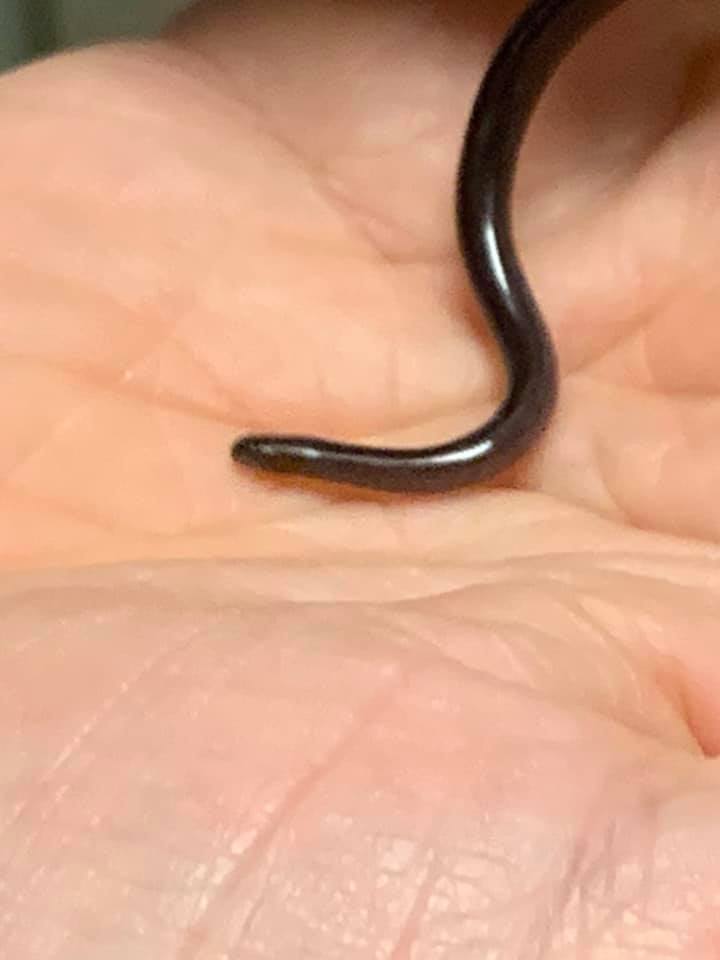 These non-native (introduced) snakes are not only extremely rare in Texas, but are only recently known from a few records in Harris County. It was an exciting find! Also known as the “Flowerpot snake,” it is believed that they spread around the tropical and semi-tropical areas of the world through in the loose soil of flowerpots. They are originally from somewhere around the coastal areas of East Africa and South and SE Asia, along the Indian Ocean.
These non-native (introduced) snakes are not only extremely rare in Texas, but are only recently known from a few records in Harris County. It was an exciting find! Also known as the “Flowerpot snake,” it is believed that they spread around the tropical and semi-tropical areas of the world through in the loose soil of flowerpots. They are originally from somewhere around the coastal areas of East Africa and South and SE Asia, along the Indian Ocean.
Every wild specimen that has ever been collected or observed has been found to be female. They seem to reproduce asexually through a process called parthenogenesis, in which they lay eggs (or give birth, we’re not actually sure) to identical copies of the mother, each baby a clone of a clone. They live in leaf litter, loose soil, and under rocks and logs. Their diet consists mainly of ants, ant eggs and larvae, and termites.
Blindsnakes are very thin and small, and have barely functioning eyes housed under translucent or even opaque eye scales (eyes are not generally important, if you spend most of your time under cover or underground). They have a depressed lower jaw that helps it keep dirt out of its mouth while it’s burrowing. As with other species of burrowing snake, they do not have wide belly scales for moving across the ground efficiently.
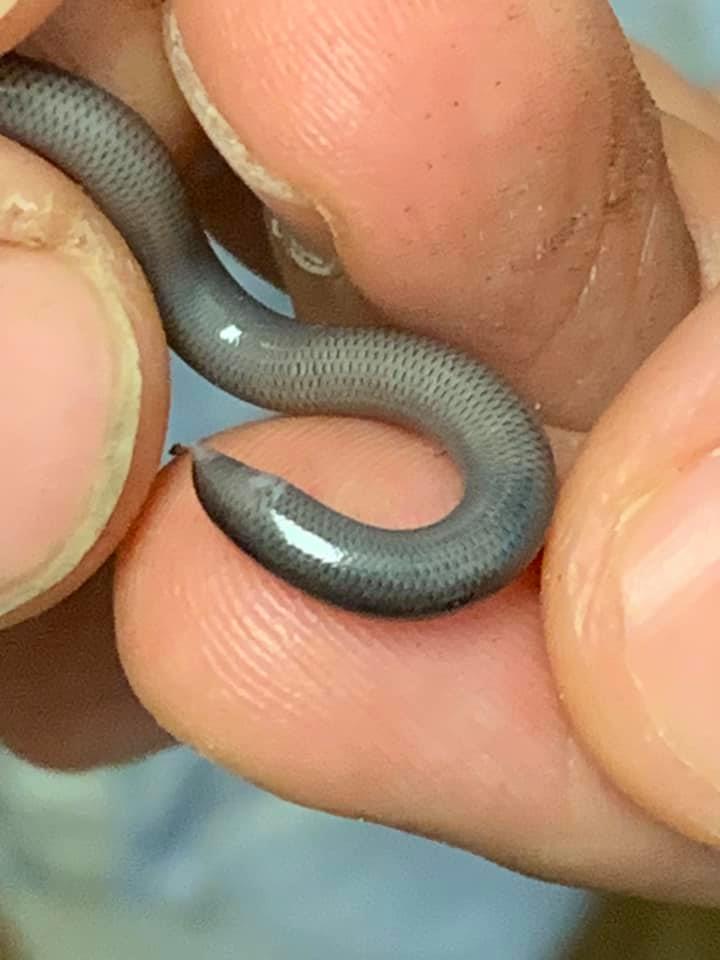 Upon finding this snake for the first time at the Nature Center, we had to make sure that it wasn’t one of the native species. In Texas, we have 3 native species of blindsnake, the Texas blindsnake being the closest native species to Harris County (occurring here only sporadically). Our closest native blind snake can be pinkish-brown to dark brown, and the Brahminy can be dark black to dark brown… so we couldn’t just use coloration to determine the species of our little friend. A couple of us got to do some real herpetology, and dig into the Texas snake books. The Brahminy has up to 20 rows of mid-dorsal scales, while the native species has only up to 14. Also, the vent (back opening) and the tail tip are whitish on the Brahminy. A little macro-photography helped us to zoom in on these characteristics, and determine confidently that we had what we thought we had.
Upon finding this snake for the first time at the Nature Center, we had to make sure that it wasn’t one of the native species. In Texas, we have 3 native species of blindsnake, the Texas blindsnake being the closest native species to Harris County (occurring here only sporadically). Our closest native blind snake can be pinkish-brown to dark brown, and the Brahminy can be dark black to dark brown… so we couldn’t just use coloration to determine the species of our little friend. A couple of us got to do some real herpetology, and dig into the Texas snake books. The Brahminy has up to 20 rows of mid-dorsal scales, while the native species has only up to 14. Also, the vent (back opening) and the tail tip are whitish on the Brahminy. A little macro-photography helped us to zoom in on these characteristics, and determine confidently that we had what we thought we had.
This was an exiting find for the naturalists on staff, and added another species to our park snake list; along with Rough Earth Snake, Gulf Coast Ribbon Snake, Eastern Hognose Snake, Texas Ratsnake, Diamondback Watersnake, Broad-banded Watersnake, and Yellowbelly Watersnake (which we only recently found living near the Cypress Pond at the South end of the park).
Let us know if you photograph any snakes in our park, or if you have seen any cool snakes in your own yard!


